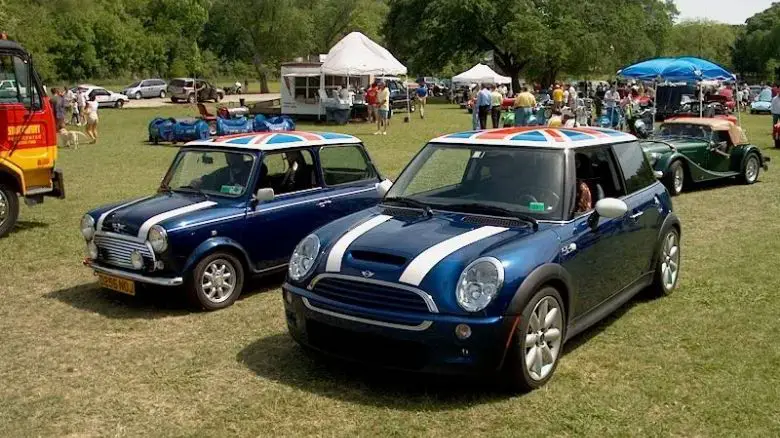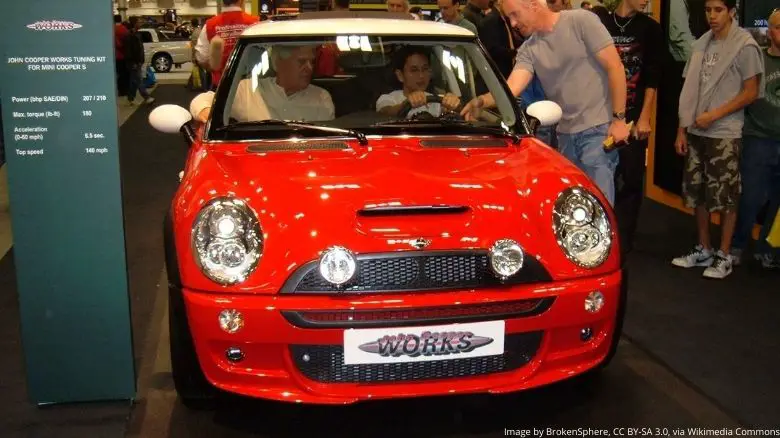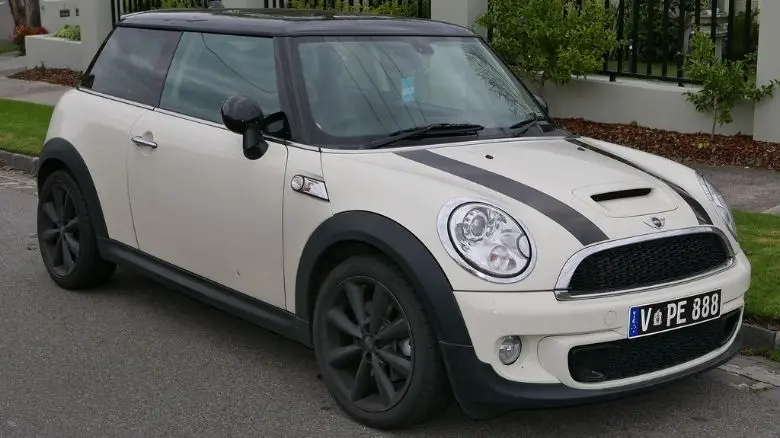Will the BMW Mini Become a Classic?

Adam Chinn
Founder, The Car Investor
The original Mini was a car that received plenty of love from motoring enthusiasts throughout its 41 years in production, and very quickly became labelled a 'classic' when production finally ceased in 2000.
When BMW took the reins, it would have been hard to believe that their revitalized 'modern' Mini could ever reach the heights that the classic Mini achieved, both in terms of sales and in enthusiasts' affections.
But these days there are classic car aficionados who are already recognizing early BMW Minis as emerging collectors' cars. So, will the BMW Mini become a classic?
The BMW Mini has already begun achieving classic status thanks to the iconic status of its predecessor, influential and recognizable design, brilliant handling, and overall popularity around the world. The first-generation models, in particular, have demonstrated clear appreciation trends and growing collector recognition.
But thanks to the sheer number of BMW Minis produced since launch in 2001, only specific variants will ever be considered true classics - making careful selection crucial for investment potential.
So how has BMW maintained and improved upon the Mini's popularity since acquiring the brand in 1994, and which BMW Minis have proven themselves as future classics?
Why did the BMW Mini become so popular?
The BMW Mini offered a unique combination of style, handling, and performance while retaining the charm and allure of its predecessor. It created a car with distinctive personality and instantly memorable design that resonated globally.
Launched at the turn of the millennium, the all-new BMW Mini appealed to buyers worldwide who were attracted by its compact dimensions, funky aesthetics, and premium execution of the classic Mini concept.
BMW's success was immediate, with production numbers quickly ramping up to levels previously unheard of for the brand. The marque's rich backstory and immense UK success had already established iconic status when BMW acquired it in 1994.

Initial skepticism about German ownership potentially ruining the beloved British icon proved unfounded. BMW demonstrated remarkable understanding of what made the Mini special while adding their engineering expertise and build quality.
Key popularity factors included:
Quirky design and distinctive brand identity
Sporty, go-kart-like handling characteristics
Extensive factory customization options
Renowned BMW build quality and refinement
Compact but practical packaging
Impressive fuel efficiency
Transferred admiration from the original Mini
Exceptional performance from hot versions
This combination quickly cemented the BMW Mini's place in automotive history, establishing the foundation for its emerging classic car status.
The first generation BMW Mini (R50, R52, R53)
Advertisement
The first-generation models generate the strongest collector interest, representing BMW's initial interpretation of the Mini concept and establishing the template for all subsequent generations.
Launch lineup in 2001 included the entry-level R50 Mini One and better-equipped R50 Mini Cooper.
The performance-focused R53 Mini Cooper S followed with its supercharged 1.6-liter engine, while 2004 brought the R52 convertible variant.
Tritec engine technology powered all petrol models, with most receiving the 1.6-liter unit (some territories got 1.4-liter One variants). The Cooper S's supercharger provided the additional performance that made it immediately desirable.
BMW retained the 'Cooper' name from the classic Mini's performance versions, creating continuity with the car's racing heritage while appealing to enthusiasts who appreciated the historical connection.
Production continued until 2006 for most variants, with the convertible lasting until 2008 when replaced by the R57. This timing has proven crucial for classic status, as the cars are now old enough for nostalgia while remaining usable modern transportation.
Are BMW Minis Reliable?
Overall reliability varies significantly by generation, with first-generation models generally proving more dependable than their R56 successors. However, all BMW Minis suffer from specific common problems that can involve expensive repairs.
The R56 generation (2007-2013) developed the worst reputation due to problematic Peugeot-developed engines, making first-generation cars more appealing for both reliability and investment purposes.
Maintenance costs reflect BMW's premium positioning, with repairs often proving expensive compared to mainstream alternatives. However, proper preventive maintenance can minimize unexpected expenses significantly.
Research remains crucial before purchasing any BMW Mini, particularly older examples. Owner forums provide extensive information about model-specific issues and solutions.
Common Problems with First Generation BMW Minis
Power steering pump failure: Electric power steering pumps prone to sudden failure with costly replacement requirements.
Variable Valve Timing (VVT) problems: Regular oil changes help, but VVT issues can still develop even in well-maintained examples.
Transmission problems: Early automatic transmissions occasionally experience complete failure, potentially requiring uneconomical repairs.
Clutch failure: Manual transmission cars suffer from premature clutch wear, creating expensive repair bills.
Water pump and thermostat housing leaks: Common failure points that should have been addressed in surviving examples.
Timing chain wear: Premature timing chain noise and failure, though easily diagnosed through listening.
Despite these issues, well-maintained first-generation Minis can provide relatively trouble-free ownership while offering superior reliability compared to R56 successors.
Which BMW Mini should I buy as an investment?
Advertisement
Investment potential varies dramatically by model and condition, with originality, performance, and rarity determining long-term appreciation prospects.
The Mk1 BMW Mini (R50 / R52 / R53)
Early models demonstrate the strongest collector appeal, with 2001 model year R50 Coopers becoming particularly rare as collectors recognize their significance.
Market dynamics show increasing difficulty finding quality examples as awareness of their importance grows among enthusiasts and investors.
The R53 Cooper S (launched 2002) adds performance credibility to the investment equation while providing exceptional driving experiences that justify ownership beyond financial considerations.
Historical significance cannot be overstated - these cars established the template for BMW's global Mini success story and ensured the brand's survival into the modern era.
Mini Cooper S vs JCW
John Cooper Works variants represent the ultimate first-generation Mini investment opportunity, combining maximum performance with genuine rarity.

Original JCW specification differed significantly from standard Cooper S models, featuring ECU remapping and comprehensive engine/exhaust upgrades that increased power to 200-210 horsepower from the standard 163 horsepower.
Dealership installation authenticity becomes crucial, as many fake JCW cars exist in the marketplace. Genuine examples came with official certificates that verify authenticity—essential documentation for investment-grade cars.
Current market dynamics show JCW R53s appreciating faster than standard models, with pristine examples commanding significant premiums over modified or questionable cars.
Which Is Better, the Mini R53 or R56?
The R53 receives overwhelmingly favorable comparison among Mini enthusiasts, despite the R56's superior interior and theoretical performance advantages.
Driving characteristics favor the R53's lightweight, compact dimensions and lower ground clearance compared to the larger, heavier R56. The go-kart-like handling that made the original Mini famous translates more directly through the R53.

Reliability reputation strongly favors the R53, avoiding the engine problems that plagued R56 models and creating better long-term ownership experiences.
Classic car potential clearly favors the R53 due to its closer connection to original Mini philosophy and superior driving dynamics that enthusiasts increasingly value over modern convenience features.
Investment perspective suggests R53 models will consistently outperform R56s in appreciation due to their more authentic character and established collector preference.
Market Analysis: Current Investment Status
Advertisement
Values have already begun appreciating for quality first-generation examples, particularly early 2001 models and Cooper S variants. The days of bargain pricing have largely ended for investment-grade cars.
Rarity through attrition has proven more significant than expected, with many examples lost to modifications, accidents, or neglect over two decades. Surviving original cars have become genuinely scarce.
Collector recognition accelerated significantly in recent years as automotive enthusiasts recognize the first-generation Mini's historical importance and driving purity compared to modern alternatives.
Market segmentation shows clear preference hierarchy:
JCW Cooper S (highest appreciation)
Early Cooper S models (strong appreciation)
2001 Cooper models (growing recognition)
Standard models (modest appreciation)
Will the Mini R50 and R53 become future classics?
The BMW Mini R50 and R53 have already achieved early classic status rather than merely showing future potential. Their importance to Mini brand history, exceptional driving experiences, and established collector following confirm their transition from used cars to collectibles.
Historical significance extends beyond the Mini brand to automotive history generally. BMW's successful premium hatchback revival influenced countless manufacturers and established templates still followed today.

The risk BMW took in revitalizing a beloved British icon with German engineering has been thoroughly vindicated by commercial success and critical acclaim spanning over two decades.
Passionate global following supports long-term values through dedicated clubs and communities focused on preserving and celebrating these cars for future generations.
Market evidence demonstrates clear appreciation trends, with early 2001 models and performance variants showing sustained value increases as collectors recognize their significance.
Comparison with later generations reinforces first-generation desirability, as subsequent models moved away from the purity and simplicity that made the originals special.
Investment Recommendations
Focus on first-generation models (2001-2006) for maximum appreciation potential, particularly early Cooper and Cooper S variants with documented histories.
Prioritize authenticity over modifications, as original examples command significant premiums in today's market while modified cars struggle to achieve similar values.
JCW variants represent premium investment opportunities but require careful verification of dealer-installed authenticity to avoid expensive mistakes.
Condition matters more than mileage for these robust cars, with well-maintained higher-mileage examples often proving superior to neglected low-mileage cars.
Documentation importance cannot be overstated - comprehensive service records and authenticity certificates significantly impact both current values and future appreciation.
The Verdict: Classic Status Achieved
The BMW Mini has successfully transitioned from controversial reboot to recognized classic, validating BMW's vision while honoring the original Mini's legacy. First-generation models have demonstrated clear investment potential alongside exceptional ownership experiences.
Market timing still offers opportunities for committed buyers, though the days of bargain pricing have ended for quality examples. Current pricing reflects growing recognition while still providing reasonable entry points compared to established classics.
The electric future adds poignancy to petrol Mini ownership, as BMW transitions the brand toward electrification. Internal combustion Minis become historical artifacts representing the end of an era.
For enthusiasts seeking cars that combine driving pleasure with investment potential, first-generation BMW Minis offer compelling propositions that honor automotive history while providing modern usability.
Future classic status is no longer speculative—it's being realized in real-time as collectors, enthusiasts, and investors recognize what BMW achieved in reviving one of motoring's most beloved brands.
Investment insight: The BMW Mini proves that successful reinterpretation of automotive icons can create new classics while honoring original heritage. Sometimes the best investments are cars that successfully bridge past and future.

About the Author
Adam Chinn is the founder of The Car Investor, combining his passion for classic cars with data-driven investment strategies to help collectors maximize their returns.
View all articles →Related Articles

Volvo 850 T-5R: The Sleeper That Shocked the Performance World
The Volvo 850 T-5R and 850 R have evolved from unconventional performance cars to cherished modern classics, representing one of the most successful transformations of a conservative brand into a genuine performance force.

Alfa Romeo 147 GTA: The Beautiful Lunatic That Defied Logic
The Alfa Romeo 147 GTA stands as automotive proof that passion can triumph over practicality, creating one of the most characterful and increasingly valuable hot hatchbacks ever built.

Will the Jaguar F-Type Become a Classic?
The Jaguar F-Type represents a fascinating case study in modern classic car potential. Launched in 2013 as Jaguar's spiritual successor to the legendary E-Type, the F-Type marked the British marque's return to dedicated sports car manufacturing after a 40-year hiatus.
Advertisement